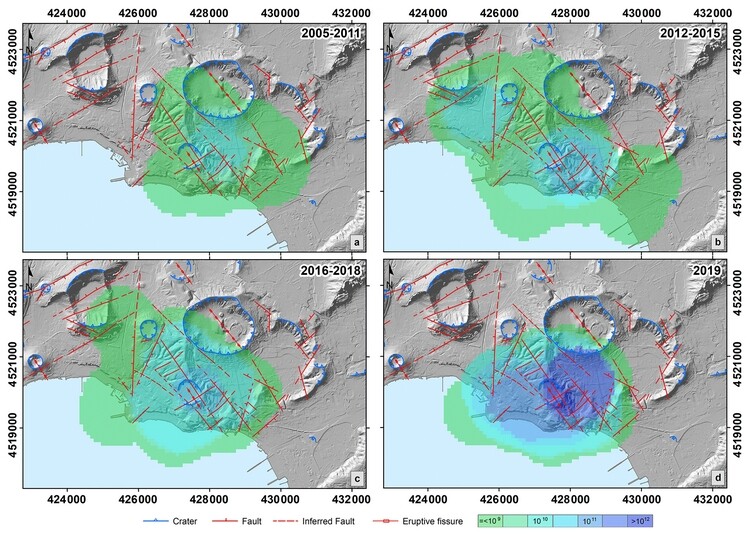
Bellucci Sessa, E., Castellano, M., and Ricciolino, P.:
GIS applications in volcano monitoring: the study of seismic swarms at the Campi Flegrei volcanic complex, Italy,
Adv. Geosci., 52, 131–144, ADGEO - GIS applications in volcano monitoring: the study of seismic swarms at the Campi Flegrei volcanic complex, Italy, 2021.
Abstract
Campi Flegrei caldera (Southern Italy) is one of the most hazardous volcanic complexes in the world since it is located inside the densely inhabited urban district of Naples-Pozzuoli.
In the past, the caldera has produced devastating to moderate eruptions and periodically undergoes from strong to minor uplift episodes, named “bradyseism”, almost always accompanied by seismic swarms. Starting from 2005 Campi Flegrei has undergone an unrest crisis, characterized by ground uplift, localized gas emissions and seismicity, often occurring in seismic swarms.
As a consequence, the monitoring activities have been progressively increasing, producing a huge amount of data, difficult to manage and match. GIS (Geographical Information System) represents a potent tool to manage great quantity of data, coming from different disciplines. In this study, we show two GIS technology applications to the seismic catalogue of Campi Flegrei.
In the first one, a high-quality dataset is extracted from the GeoDatabase addressed to seismological studies that require high precision earthquake locations. In the second application, GIS are used to extract, visualize and analyse the typical seismic swarms of Campi Flegrei.
Moreover, density and seismic moment distribution maps were generated for these swarms. In the last application, the GIS allow to highlight a clear variation in the temporal trend of the seismic swarms at Campi Flegrei.
© Author(s) 2021. This work is distributed under the Creative Commons Attribution 4.0 License.